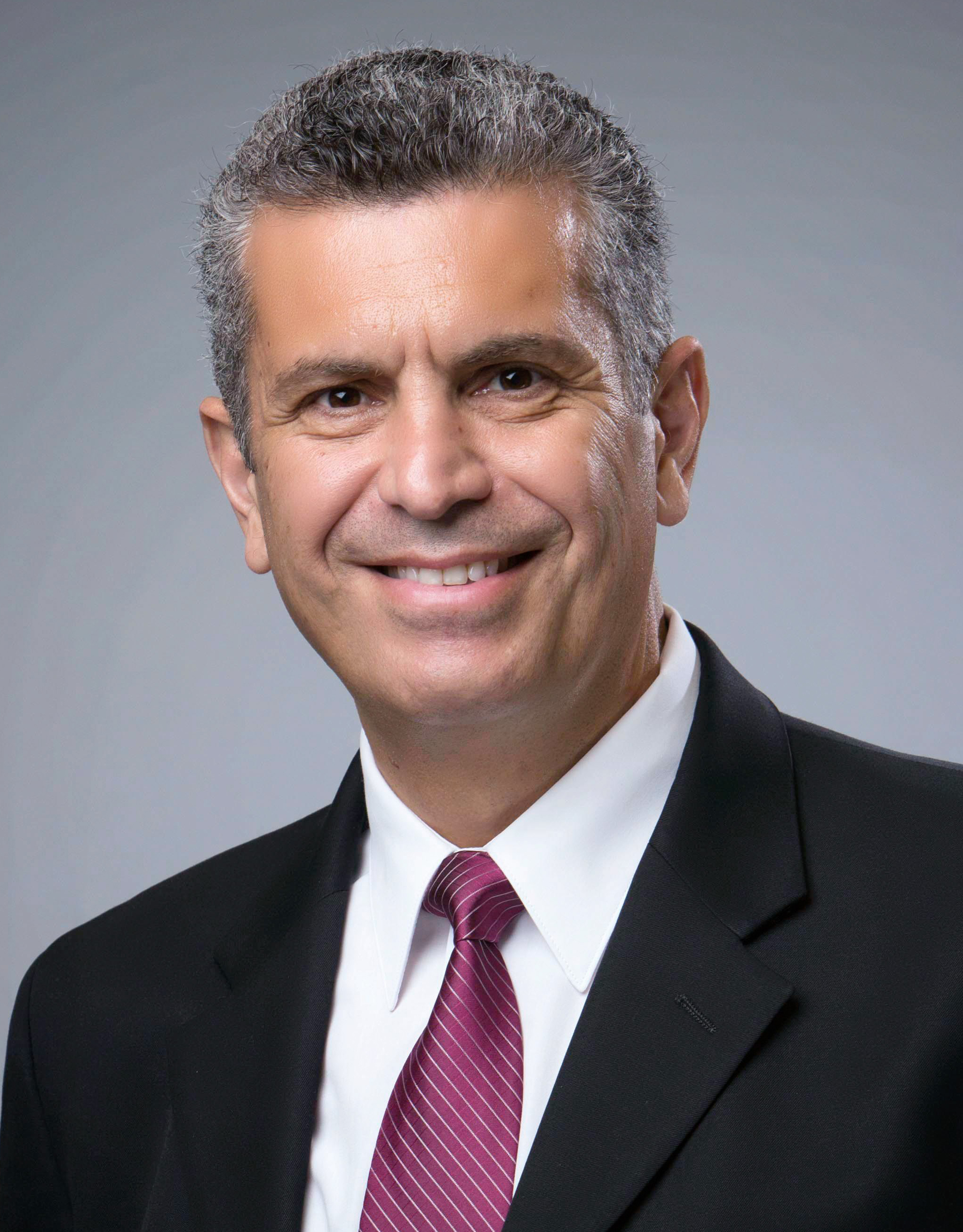Going all-in on the cloud will speed up how quickly Occidental Petroleum can experiment with new technologies and potentially improve operations.
As the company moves through its digital transformation, Occidental expects to see a reduction in capex associated with migrating away from on-premises data centers. Occidental also expects significant results through access to innovative software-defined technology that can be deployed via Amazon Web Services (AWS).
AWS announced on July 27 that Occidental had chosen for the company to provide cloud services under a multiyear agreement underpinning the operator’s digital transformation.
Under the agreement, Occidental will migrate its core production applications and on-premises information technology (IT) infrastructure to the AWS cloud to improve operational efficiencies, eliminate upfront capex and support the company’s development of systems that will remove CO2 from the atmosphere, including at the large-scale direct air capture (DAC) plants at Occidental’s 1PointFive subsidiary.

Yanni Charalambous, CIO at Occidental, told Hart Energy that the move will give the company access to technology that’s not available outside the cloud environment while helping Occidental better manage its resources. Using the cloud will minimize capex on hardware and software for data centers, along with space and energy needed for the data center.
Uwem Ukpong, vice president of global services at AWS, told Hart Energy that companies often choose to migrate to the cloud because it frees them from the constraints associated with building, maintaining and expanding their own data centers.

Ukpong recounted a recent conversation with a customer that typically built data centers for the maximum amount of computer power they anticipated in the future — even if they wouldn’t reach that level for three years or more. They put that money down up front so they wouldn’t have troubles expanding when the need arose.
With on-premises data centers, “if they needed to expand capacity, they needed to go through a rigorous process with the finance (department) and the supply chain to go buy and acquire hardware,” he said.
Migrating to the cloud provides pay-as-you-go elasticity, allowing a company to quickly ramp up on computer power to accommodate a project and scale back down when the workload eases, he said. Companies are also able to repurpose IT staff to handle different projects, such as building applications, he said. It’s a shift in thinking from the traditional route companies travel with on-premises data centers.
Charalambous said, “We are sharing now on the cloud with other companies that same infrastructure that AWS provides. That allows us to save money mostly on the capital side as well as on the operations side of that environment.”
And while that’s important, he’s most excited about the agility of the cloud environment when it comes to innovations.
“That will allow us to try out things faster, fail where things are not working out and be successful faster,” he said.
Charalambous believes the innovative benefit will materialize soonest in the DAC facilities, where the company is focused on developing and using software-defined plants. If Occidental found a way to reduce the energy necessary to capture CO2 out of the atmosphere through a digital twin of the DAC plant, the company could validate the model and deploy it without a turnaround, he said.
When Amazon identifies an opportunity to improve the way they operate, he said, the company doesn’t take their whole data center down to make the change.
“They don't do a turnaround. They actually inject that new technology or capability right into the environment, while that environment is still running. So we're looking to do the exact same thing with the direct air capture plants,” Charalambous said.
He said Occidental has worked with various cloud vendors over the years and ultimately chose AWS as its digital transformation partner because of the technology AWS can deploy while being price competitive.
“The agility is very encouraging and progressive,” he said.
Migrating to the cloud
Digital transformation is a major undertaking, and it starts with migrating on-premises systems to the cloud. But it’s not so simple as a “lift and shift” of data, Charalambous said. That would prevent Occidental from taking full advantage of the capabilities that the cloud offers. First, the data has to be optimized for the cloud before it’s migrated.
Occidental expects to spend up to 18 months migrating data from its thousands of servers and systems in its main data centers in Houston and Dallas as well as smaller locations around the world. The migration is already underway.
The company sees the cloud as something of a fresh start, Charalambous said.
“We're starting from a blank piece of paper here to redesign how we manage our data in that environment. It gives us an opportunity to review how we're doing data management and analytics today, and how we can further improve it by using the technologies that AWS provides for that,” he said.
Ukpong said content from the on-premises data centers includes simulation data, seismic data, financial data, SAP data, facilities data and applications
“With all their technical data moving onto the cloud—seismic simulation data, geology data, et cetera—your ability to then access that information and leverage the additional computing power you have on the cloud is what's going to help Oxy run even faster in the way they prospect for oil and gas or simulate the behavior of their reservoirs,” he said.
Once the migration is complete, applications that have been migrated will be modernized, or enhanced, as well as building new applications in the cloud, he said. Modernizing is important because data may not optimally interact with apps, slowing down performance and computations, he said.
“When we migrate a large bank, for example, all of that data is migrated. But the way that data interacts with your app may not be optimized for the cloud. So we need to go back and rebuild and reconstruct the data and the application so that when you log into your bank (account) on the app, it's much faster and you can do more computations of comparison between different financial products, loan rates, et cetera,” he said.
Innovation can take place in parallel with modernization and may include the use of AI, generative AI or machine learning. After modernization, innovation kicks into high gear.
AWS and Occidental will sit down with partners who could bring technology solutions that could optimize the company’s performance.
“Let's look at aspects of your business that relate to production optimization, for example, or seismic interpretation, for example, and say, ‘What are the new things we want to introduce here that are going to double productivity and drive efficiency in what you do?’” Ukpong said.
And, he said, those things will likely be in the area of predictive maintenance for the DAC plants because equipment reliability is critical to operations.
“Being able to connect all of their sensors and relaying all of that sensor information in real time back onto the cloud — and to be able to start predictive maintenance or forecasting when failures will occur — is going to be one of the big things we're going to do with them,” he said. “The beauty here with 1PointFive is that a lot of the applications that they are going to be developing to really improve the way this DAC plant is working, are going to be built with the cloud mindset—fast and optimized.”
Recommended Reading
CERAWeek: Saudi Aramco CEO Says No Peak in Oil Demand for Some Time to Come
2024-03-18 - Reducing greenhouse gas emissions from hydrocarbons through carbon capture and other technologies achieves better results than alternative energies, Saudi Aramco CEO Amin Nasser said.
NAPE: CCUS is a Risky Venture Hinging on Tech, Regulation, Reservoirs
2024-02-14 - Transdisciplinary collaboration and reservoir understanding are key to mitigating CCUS risks.
RBC: Minerals, E&P Stocks Wooing Back Generalist Investors
2024-04-16 - Public mineral and royalty companies have performed well in the markets, and investors are taking notice. But experts say mineral and royalties stocks still have a long way to go to compete for generalist investor capital.
‘Growth Story’ for Oil: Rice's Kenneth Medlock on Demand Trends
2024-03-05 - Economics drive oil demand, not politics, Rice University’s Kenneth Medlock said during the International Drilling Conference and Exhibition in Galveston.
CERAWeek: NOCs Balance Financial Realities, Energy Transition
2024-03-21 - National oil companies’ strategies include diversifying energy sources and seeking reserves located deeper in the ground and in deeper waters, while still working to curb emissions.





